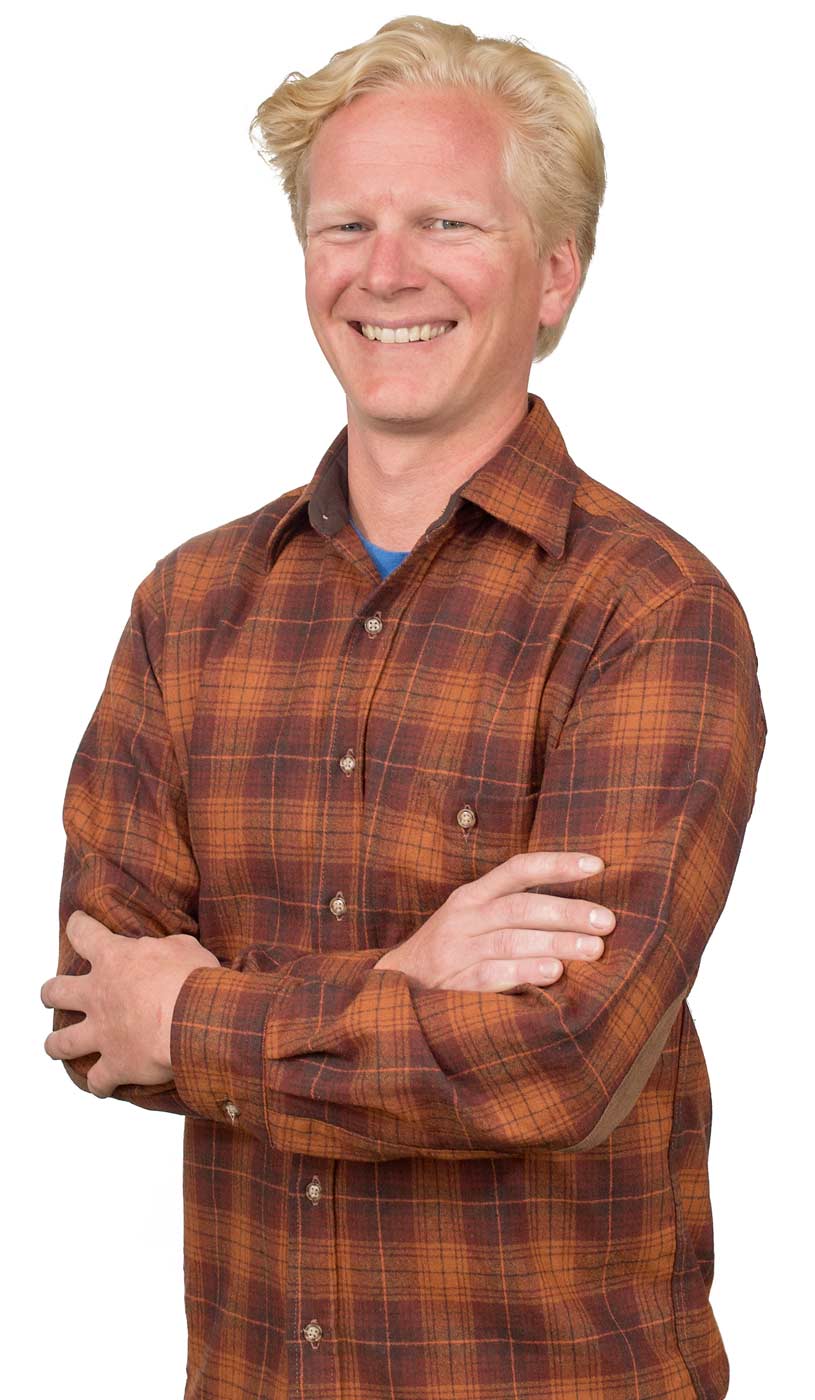family background/ Oliver started farming at age 27 with his parents, Milo and Kay May, along the banks of the Columbia River in Washington’s Horse Heaven Hills appellation.
age/ 32
grower/ Alderdale, Washington
crops/ grapes
business/ Discovery Vineyard
 How did you get your start?
How did you get your start?
After I got out of college with a bachelor of science, I wasn’t too sure what I wanted to do.
I was interested in the natural sciences, enjoyed working outside, and my parents had just started a vineyard — so joining up with them was too good of an opportunity to pass up.
Some of the first things I learned was a good work ethic, how to run a crew or manage projects. The most crucial thing I learned early was how important water management is to the success of a vineyard and crop.
What key points do you have about water management?
A theory that I heard often when I was starting out is that you need to stress vines to bring out varietal characteristics.
It’s true you need to restrict water at certain times of the year, but the adage that if you water after veraison, it dilutes your grapes, I think it’s wrong.
In the spring, you need to make sure the water profiles are totally full and ready for bud break. Soon after that you want to shut down your vegetative growth in your canopy, because you want to focus your energy to the fruit instead of to the shoots and leaves.
It’ll help get as much sugar accumulation as you can and help the fruit ripen later in the season. But once you shut down your vegetative growth, then we turn the water back on upwards of 70 to 75 percent evapotranspiration usage.
What were some of your resources learning to farm?
Since I was a kid, I’ve always had an interest in the natural environment. That led me to Evergreen State College, where I learned about bird behavior and identification.
That was a big influence in my life — getting into falconry. I now use it to abate birds in my vineyards. Early on in my career, I was very fortunate to work with (wine grape grower) Paul Champoux.
Having him as a resource, where I can go back to him when I have a problem or just have a beer with, is great.
Are there new techniques you’d like to incorporate in the vineyard?
If I were to install a new vineyard, I’d make sure it can be machine harvested. We are all hand labor, but I see using mechanization as very important. Our western sprawl style does not lend itself to mechanization well.
I think if we were to go mechanized, we’d have to pin up both sides and rethink our leaf thinning methods. I think there’ll always be a place for some amount of hand labor.
With hand pruning you can have a much more even, uniform crop because you can get the spurs and shoots where you want them.
Describe benefits of western sprawl trellis system?
Using the western sprawl trellis system, we lift the eastern side of the canopy and do leaf thinning to expose the grapes to morning sunshine.
Ideally we leave a shelf of leaves over your grapes to protect them once the sun is up about 10 a.m. We thin around the west side of the canopy to protect the fruit from the afternoon sun and increase airflow to reduce powdery mildew growth.
What would you recommend to younger farmers?
There aren’t that many young farmers getting into agriculture.
I think if you’re young, you’ll have excellent opportunities, especially for those who are more savvy about technology and have perspectives that may not be obvious to people who’ve been doing this their whole lives.
There’s a lot of value in physical work and the satisfaction you get from it at the end of the day.
Getting an internship with a farm and a crop that interests you is a good way to start out. I think college is a way to get into this industry, but I don’t think it’s the only way. There’s a lot of opportunities in agriculture and it’s a good way of life.
– by TJ Mullinax
—
Correction: The original story showed the incorrect last name for Milo and Kay May. Good Fruit Grower regrets the error.






Leave A Comment